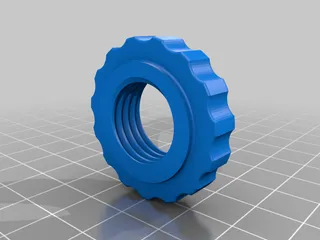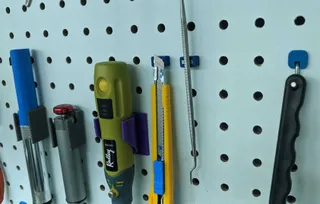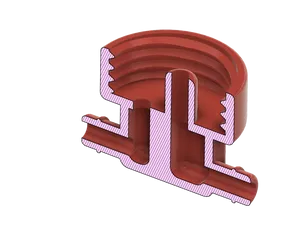Therapeutic Ultrasound Power Meter (Radiation Force Balance)
Description
PDFI bought a therapeutic ultrasound machine from eBay and wanted to know if it really produces the claimed power output (it does). It's supposed to provide up to 3.4 W/cm^2. The transducer is claimed to be 1 inch diameter although the face of the transducer is larger. To measure the power I followed the IEC61161 methods and some ideas outlined in the links below, making a single 45 degree reflector (easier than the cone) from aluminium and measuring the force with a small scale that can detect small changes in weight ( 0.01g ).
The pivot point is a piece of the blade from a light duty snap-off utility knife that slots into a 3d printed knuckle.
The balance part comprises the 45 degree plate and a wire with a sliding screw that is used to roughly set the weight on the scale to a reasonable value.
To do the ultrasonic output power measurement
- Set the digital scale under the screw and slide the screw so that it applies a few grammes of weight, make sure the balance is level. Tare the scale.
- The senor plate is in degassed water below the surface so that the transducer can be held above its centre. The whole beam must strike the plate and you need to be above the centre because the distance to the balance point must be known.
- You should use an absorber to capture the sound reflected from the plate, I used a soft silicone that had air entrapped during mixing, a very strong attenuator. I got almost the same readings without the absorber but for accuracy you should use the absorber.
- Move the active transducer over the plate and the digital scale will show a negative reading as the ultrasound pushes down on the plate, note the reading.
- Calculate the power that reflected off the plate by multiplying the measured weight by the ratio of distance to the pivot point and by the sound velocity and g (9.8m/s^2).
- Knowing the total power you now divide by the area of your transducer to get the power density in W/cm^2.
I have no reference to say how accurate my setup was, how important degassing the water is, etc. but when set to 3W/cm^2 I measured 2.7W/cm^2 which was close enough for me to be satisfied that the device was working.
You don't need to 3D print anything but for me it was the simpler route to get a working measurement.
A few references
- Realization of Medical Ultrasound Power Measurement by Radiation Force Balance Method
- Ultrasonic Power Output Measurement by Pulsed Radiation Pressure
- Power Measurement Tutorial Video
- Comparison Between Two Different Experimental Set-Ups For Ultrasound Power Measurement
- Primary Level Ultrasonic Output Power Measurement
Tags
Model origin
The author marked this model as their own original creation.



